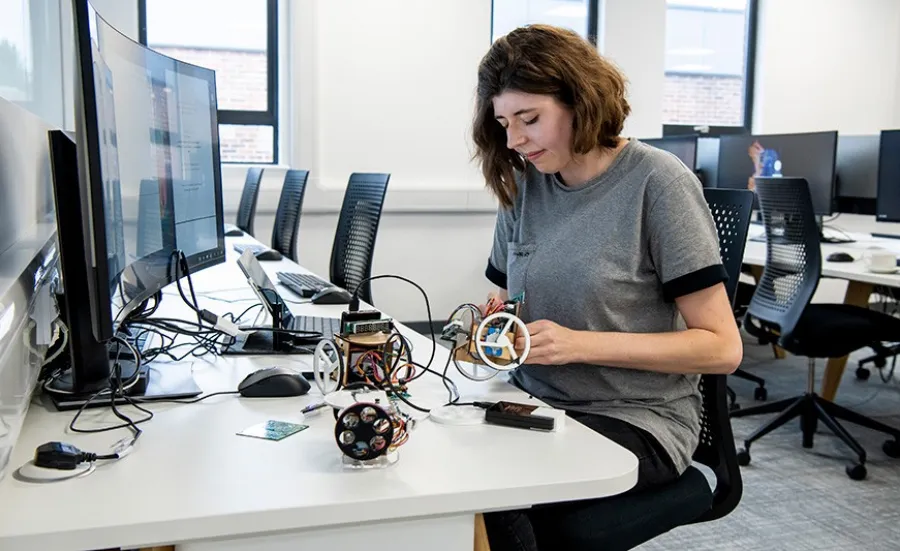Current research degree projects

Explore our current postgraduate research degree and PhD opportunities.

Explore our current postgraduate research degree and PhD opportunities.

Respiratory diseases develop progressively. However, current monitoring methods are unsuitable for long-term continuous monitoring. Near-infrared spectroscopy (NIRS) uses light to interrogate the optical properties of tissue. This project aims to develop a wearable system for long-term respiration monitoring using NIRS powered by artificial intelligence (AI) to aid in analysis.
This project will explore the combination of Stacked Intelligent Metasurfaces (SIM) and Orthogonal Time Frequency Space (OTFS) in the next-generation Space-Air-Ground Integrated Network (SAGIN).
This PhD project will develop advanced ultrasonic array techniques for hydrogen leak detection, localisation and characterisation in complex, noisy environments. Combining mathematical modelling and physics-informed signal processing with AI-driven methods (including PINNs), the research aims to enhance robust, cost-effective leak detection with industrial applications on complex sites.
This project will develop an integrated membrane electrochemical system (MES) for efficient lithium separation and CO? capture. By combining advanced membrane materials development with electrochemical process design and optimisation, it aims to deliver a transformative solution for sustainable resource recovery and carbon management.
This project will use device simulations combined with transient electronic and optoelectronic characterisation techniques to unambiguously identify the resistive switching mechanisms underlying memristors based on a wide variety of materials systems including perovskites and titanium-based compounds.
Traditional circuit theory, grounded in transfer functions and state-space models, fall short at addressing the complexities of modern, bidirectional power networks. This project investigates data-driven control methodologies tailored for active networks, with a particular focus on coordinated control strategies, distributed controllers, and their practical implementation on power converter devices.
Eastleigh Borough Council with John Hansard Gallery and Winchester School of Art at the University of 天发娱乐棋牌_天发娱乐APP-官网|下载 have established a partnership to offer artist residencies at One Horton Heath (OHH) as PhD Studentships.
The objective of this project is to develop a gyroscope using a micron-sized levitated nanodiamond containing nitrogen-vacancy (NV) defects. We will leverage the properties of the NVs to accurately measure particle rotation, overcoming limitations found in other levitated optomechanics platforms with the goal of delivering a competitive levitated micro-inertial sensor.
This project falls within the field of levitated optomechanics, focusing on experiments involving nanodiamond particles with nitrogen-vacancy (NV) quantum defects. The aim is to explore the coupling between the internal spin degrees of freedom of the NV centres and the particle's motion, with the objective of creating macroscopic quantum states.